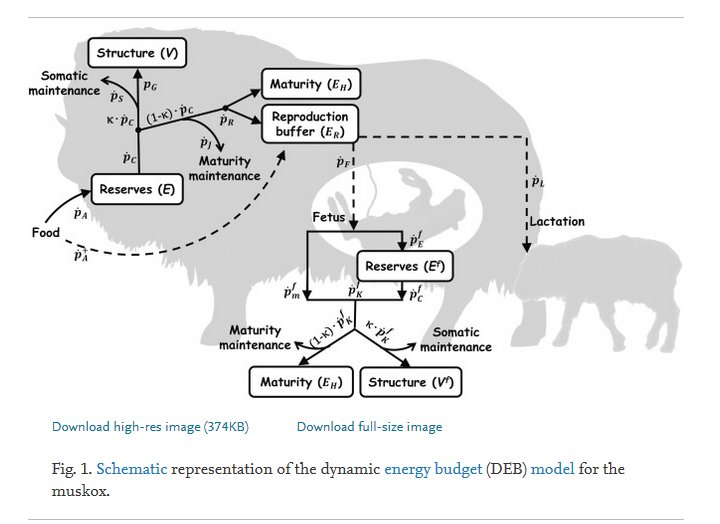Quantification of the full lifecycle bioenergetics of a large mammal in the high Arctic
New publication by Jean-Pierre Desforges, Gonçalo M. Marques, Larissa T. Beumer, Marianna Chimienti, John Blake, Janice E. Rowell, Jan Adamczewski, Niels Martin Schmidt, Floris M.van Beest

Abstract:
Energy is a critical driver of animal life-history traits and Darwinian fitness, with direct implications for population dynamics. In the Arctic, extreme seasonal climatic conditions dictate energy flow and physiology of resident species. Consequently, vital rates of animal populations in the Arctic are tightly linked to climatic factors influencing food availability and quality. The muskox (Ovibos moschatus) is a capital breeder and the largest herbivore in the Arctic. Seasonal changes in energy intake influence body reserve dynamics of this species, impacting inter-annual and spatial variations in survival and recruitment. Yet, little is known about the full lifecycle bioenergetics of this and other Arctic species, and the impact of extreme seasonal conditions on life-history traits have never been quantified. By integrating energetic and physiological processes throughout the full lifecycle of individuals, we developed an individual-based model using dynamic energy budget theory (DEB-IBM) of the muskox that covers all aspects of mammalian life-history. We parameterized a baseline muskox model using data from a well-studied captive research herd, and then explored its application to a wild population in the high Arctic to assess the life-history implications of seasonal food availability. Our baseline DEB-IBM, which for the first time explicitly characterized fetal development using DEB theory, successfully predicted life-history traits as well as patterns of growth, body condition, feeding, metabolic rates, and reproduction of captive muskoxen. Adaptation of the model to the wild population required re-parameterization of only three variables that controlled seasonal food availability and upregulated assimilation. The wild model successfully captured inter-annual costs of reproduction, such that lactating females were in poorer body condition than females without calves. Arctic seasonal food limitations reduced fecundity in wild muskoxen by 42% compared to annual reproduction in well-fed captive individuals. We have developed a mechanistic energy-based framework to study life-history processes of muskoxen but the model is broadly applicable also for other mammals in the Arctic. Our study quantifies and highlights the strong interplay between energetics and individual fitness components, opening the door to future applications of the model in assessments of population dynamics and climate change impacts.
